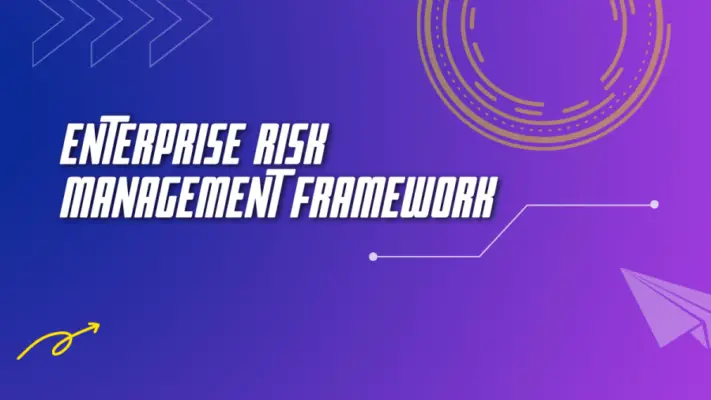First, it is important to start with a risk assessment and understand the latest enforcement policies, as suggested by GAN Integrity.
Second, it is important to review your specific regulator’s practices and your institution’s policy requirements for RCSAs, as advised by Treliant.
Third, fostering a risk-aware culture, encouraging open communication, and leveraging technology for real-time monitoring are best practices for identifying and managing emerging risks and opportunities, according to LinkedIn.
Finally, breaking down the silos between departments, improving communication, and creating a culture of proactive risk can help address common RCSA challenges, as explained by LogicGate. The eleven tips will include based on my own experience:-
- Start with a thorough risk assessment to identify all key risks (GAN Integrity)
- Understand the latest regulatory policies and enforcement trends (GAN Integrity)
- Manage third-party risks closely, as they can pose significant compliance issues (GAN Integrity)
- Encourage open communication and feedback across departments (LinkedIn)
- Leverage technology for real-time risk monitoring and control tracking (LinkedIn)
- Break down departmental silos to foster collaboration (LogicGate)
- Create a culture of proactive risk management (LogicGate)
- Get executive buy-in and support for the RCSA process
- Document the RCSA methodology and ensure consistency
- Regularly review and update the RCSA to address new/emerging risks
- Verify control remediation and monitor ongoing effectiveness
In today’s complex regulatory landscape, maintaining compliance with RCSA (Risk Control Self-Assessment) requirements is crucial for organizations.
This article provides concise and valuable insights, presenting 11 essential tips for achieving regulatory compliance.
Developing a comprehensive risk management framework, creating an operational risk profile, and utilizing key risk indicators (KRIs), companies can enhance their ability to identify, assess, and mitigate risks effectively.
These tips serve as a practical guide for businesses striving to navigate the intricacies of regulatory compliance and safeguard their operations.

What is Regulatory Compliance?
Regulatory compliance refers to the adherence to laws, regulations, and guidelines set forth by governing bodies in a specific industry.
In the context of RCSA (Risk Control Self-Assessment), regulatory compliance encompasses the practices and processes implemented to ensure compliance with relevant regulations.
Understanding the basics of regulatory compliance is crucial for organizations to manage risks and avoid legal and financial consequences effectively.
What is RCSA?
RCSA, or the Regulatory Compliance Self-Assessment, is a structured process that organizations undertake to assess and evaluate their compliance with regulatory requirements.
It involves conducting a comprehensive review of internal controls, risk assessment, and operational risk events to identify gaps and areas of non-compliance.
The purpose of RCSA is to proactively identify and mitigate risks, ensure compliance with regulatory requirements, and improve the overall effectiveness of an organization’s risk management framework.
Some key elements of RCSA include:
- Risk assessment: Identify and assess potential risks associated with regulatory requirements.
- Controls evaluation: Evaluate the adequacy and effectiveness of existing controls to manage these risks.
- Corrective actions: Implement appropriate actions to address any identified gaps or areas of non-compliance.
- Ongoing review: Continuously monitor and review the effectiveness of controls to maintain regulatory compliance.
Implementing RCSA can present challenges, such as resource allocation, data management, and keeping up with evolving regulatory requirements.
However, the benefits of a well-executed RCSA process far outweigh these challenges, as it enables organizations to manage risk and ensure compliance proactively.
Overview of 11 Essential Tips for RCSA Regulatory Compliance
In the realm of regulatory compliance, it is crucial to understand the concept of regulatory compliance itself and its significance in implementing the RCSA process effectively.
Regulatory compliance refers to adhering to the laws, rules, and regulations of regulatory bodies. For senior management in banks, it is essential to stay updated with the evolving regulatory landscape to avoid potential issues.
Regulatory requirements help ensure the proper identification, assessment, and mitigation of operational risks within the bank. By understanding the bank’s risk profile and risk appetite, senior management can develop effective risk management practices.
This includes implementing key risk indicators to monitor the effectiveness of risk management efforts. Overall, regulatory compliance plays a pivotal role in maintaining the integrity and stability of the financial system.
1. Develop a Comprehensive Risk Management Framework
To develop a comprehensive risk management framework, organizations must:
- Establish a clear risk appetite statement to guide decision-making.
- Assess risks and identify control requirements to mitigate potential threats.
Once the controls are designed and implemented, it is crucial to:
- Evaluate the effectiveness of the framework.
- Ensure ongoing compliance and risk mitigation.
Establishing a Risk Appetite Statement
A comprehensive risk management framework requires establishing a clear and quantifiable risk appetite statement. This statement serves as a guiding principle for the organization’s risk management activities and helps to define the level of risk the organization is willing to accept in pursuit of its objectives.
To develop an effective risk appetite statement within the operational risk management framework, consider the following:
- Define the risk appetite: Clearly articulate the organization’s tolerance for risk and its desired risk profile. This includes identifying the risks the organization is willing to take and those it wants to avoid.
- Align with business objectives: The risk appetite statement should be aligned with the organization’s overall strategy and objectives. It should reflect the organization’s risk appetite in relation to its mission, vision, and values.
- Consider the control environment: Assess the internal control systems and control environment to determine the organization’s ability to manage risks effectively. This includes evaluating the adequacy and effectiveness of control assessments and the assessment of controls.
- Monitor and review: Regularly review and update the risk appetite statement to ensure it remains relevant and reflects changes in the organization’s risk profile. This will help to identify and address any gaps or emerging risks.
Assessing Risks and Identifying Control Requirements
Conducting a thorough assessment of risks and identifying control requirements is the first step in developing a comprehensive risk management framework.
This involves understanding the potential risks that organizations face and the controls needed to mitigate them. To do this effectively, knowledge and information must be shared across departments and various methods such as interviews, surveys, and data analysis should be utilized.
Identifying relevant risks and prioritizing critical ones, organizations can allocate resources more efficiently and focus on areas that require immediate attention.
Considering past control failures and assessing the effectiveness of current controls is essential in this process. Internal audit functions are crucial in conducting audits and providing valuable insights.
Additionally, operational risk management tools and operational risk event collection contribute to developing a robust risk management framework.

Designing and Implementing Effective Controls
In order to develop a comprehensive risk management framework, organizations must focus on designing and implementing effective controls.
This involves various steps and considerations to ensure the controls are robust and aligned with regulatory requirements.
Here are four key actions organizations can take:
- Conduct internal processes and risk questionnaires to identify potential risks and control gaps.
- Develop a control register to document and track key controls implemented to mitigate identified risks.
- Regularly review and update the control register to reflect changes in the organization’s risk landscape and regulatory requirements.
- Perform audits, including external audits, to assess the effectiveness of implemented controls and identify areas for improvement.
Evaluating the Effectiveness of the Framework
To evaluate the effectiveness of the framework for developing a comprehensive risk management framework, organizations should assess the alignment of controls with regulatory requirements. This evaluation encompasses several key considerations.
Firstly, organizations must evaluate how well their controls address potential external events that may impact their operations.
This includes assessing the legal risks associated with regulatory compliance and ensuring that controls are in place to mitigate these risks.
Secondly, organizations should assess how well their controls align with their business goals. This involves identifying any biases or gaps in the framework that may hinder the achievement of these goals.
Furthermore, organizations must evaluate the effectiveness of their non-financial risk management, fraud risk management principles, and operational risk management.
This can be done by assessing the adequacy of fraud control activities and action plans.
Lastly, organizations should involve the board in the evaluation process to ensure a comprehensive and unbiased assessment of the framework’s effectiveness.
2. Create an Operational Risk Profile
Creating an operational risk profile is a crucial step in ensuring regulatory compliance.
To do so, organizations must monitor internal and external events that could impact their operational processes.
Monitor Internal and External Events
By monitoring internal and external events, organizations can effectively create an operational risk profile to ensure RCSA regulatory compliance.
This process involves identifying and analyzing potential risks that may impact the organization’s ability to achieve its objectives. Here are four key steps organizations can take to monitor internal and external events and create an operational risk profile:
- Conduct regular audits of business lines and functional areas, including human resources, to identify potential non-financial risks.
- Review financial statements and reports to identify material risks that could impact the organization’s financial stability.
- Utilize risk cloud technology to capture and analyze data from various sources, including internal systems and external databases, to identify emerging risks and trends.
- Establish an operational risk division dedicated to monitoring and managing operational risks, including implementing fraud risk management processes and ensuring a commitment to fraud risk mitigation at all levels of the organization.
Assess Relevant Risks to Operational Processes
Continuing the analysis of internal and external events, organizations can assess relevant risks to operational processes, thereby creating an operational risk profile for RCSA regulatory compliance.
Assessing these risks is crucial for businesses, especially in the financial sector, as it helps identify potential areas of losses and management risk.
To assess operational risks effectively, organizations can rely on detective controls, such as audit reports and external audit programs, to identify existing risks and gaps.
Moreover, preventive controls can be implemented to mitigate risks and prevent future losses.
Regular retrospective reviews can also provide valuable insights into the effectiveness of risk mitigation methods.
Analyze Residual Risk Levels and Determine Risk Appetite
To effectively manage operational risks and ensure regulatory compliance, it is essential to analyze residual risk levels and determine the organization’s risk appetite by creating an operational risk profile.
This process involves evaluating the inherent risk rating of various operational processes and identifying the potential risks they pose to the institution. By conducting a thorough analysis, institutions can prioritize and address the most significant risks.
Additionally, the inclusion of risk types such as fraud risk, bank secrecy act, anti-money laundering, and bank fraud in the operational risk profile enables sound fraud risk management.
It is crucial to consider the institution’s risk maturity and the specific risks associated with bank management and bank debit cards.

3. Introduce Key Risk Indicators (KRIs)
Introducing Key Risk Indicators (KRIs) is crucial for effective regulatory compliance.
By establishing KRIs for each type of risk exposure, organizations can proactively identify and monitor potential risks.
Ongoing monitoring of these KRIs allows for the measurement of performance against goals or benchmarks, helping organizations stay on track and address any issues that may arise.
Establish KRIs for Each Type of Risk Exposure
Begin by identifying and implementing key risk indicators (KRIs) specific to each type of risk exposure to ensure regulatory compliance in RCSA. Establishing KRIs is crucial for monitoring and managing risks effectively. Here are four essential steps to consider:
- Utilize machine learning and AI-related technologies to identify potential risks and vulnerabilities in your organization’s operations.
- Stay updated with regulatory requirements imposed by national banks, such as the FFIEC Bank Secrecy Act and anti-money laundering regulations.
- Follow the guidelines provided by the Comptroller for Bank Supervision Policy to conduct identified third-party relationship audits.
- Evaluate your business model and its susceptibility to the influence of biases and cognitive biases.
By incorporating these measures, organizations can proactively manage risk exposures and ensure compliance with regulatory standards.
Implementing KRIs allows for a comprehensive understanding of potential risks, enabling timely mitigation actions and safeguarding the reputation and stability of your organization.
Monitor KRIs on an Ongoing Basis to Measure Performance Against Goals or Benchmarks
Organizations must regularly monitor Key Risk Indicators (KRIs) to assess their performance against goals or benchmarks for effective RCSA regulatory compliance.
Monitoring KRIs allows organizations to identify potential risks and take necessary action in response. It involves a systematic and objective review of the identified KRIs, including audits, retrospective reviews, and third-party relationship audits.
To effectively monitor KRIs, organizations need to establish ownership requirements and ensure that material issues are promptly addressed.
This can be done through the use of an internal loss database, which provides valuable insights into the organization’s risk exposure. Regular reporting of KRIs to the board of directors is also essential for transparency and accountability.
Furthermore, organizations should consider voluntary sharing and permissible information sharing with industry peers to gain insights and benchmark their performance.
This collaborative approach can help identify best practices and enhance overall risk management capabilities.
Frequently Asked Questions
What Are the Consequences of Non-Compliance With Regulatory Requirements?
Non-compliance with regulatory requirements can result in significant consequences for organizations, including financial penalties, legal actions, reputational damage, loss of business opportunities, and potential harm to stakeholders and the overall market stability.
How Can a Company Ensure Ongoing Compliance With Changing Regulations?
To ensure ongoing compliance with changing regulations, a company should implement a robust regulatory change management process.
This involves staying updated on regulatory changes, conducting regular risk and compliance assessments, and implementing necessary changes to policies and procedures.
What Are Some Common Challenges Faced by Organizations When It Comes to Regulatory Compliance?
Organizations often face common challenges in regulatory compliance, such as keeping up with changing regulations, interpreting complex requirements, ensuring consistent adherence across departments, and maintaining accurate documentation.
How Can Technology Be Leveraged to Enhance Regulatory Compliance Efforts?
Technology can be leveraged to enhance regulatory compliance efforts by automating processes, improving data accuracy, and enabling real-time monitoring.
It can also help in streamlining reporting and analysis, facilitating collaboration, and ensuring timely compliance with regulatory requirements.
What Role Does Internal Audit Play in Ensuring Regulatory Compliance?
Internal audit plays a critical role in ensuring regulatory compliance by conducting independent assessments of an organization’s processes, controls, and adherence to applicable laws and regulations.
Their objective is to identify and mitigate risks, provide assurance to stakeholders, and recommend improvements to enhance compliance.

Conclusion
Achieving regulatory compliance in the Risk and Control Self-Assessment (RCSA) process requires:
- A comprehensive risk management framework.
- An operational risk profile.
- The use of key risk indicators (KRIs).
By implementing these essential tips, organizations can effectively:
- Identify and manage risks.
- Ensure compliance with regulatory requirements.
It is imperative for organizations to prioritize regulatory compliance to:
- Maintain a strong risk management system.
- Protect their stakeholders.

Chris Ekai is a Risk Management expert with over 10 years of experience in the field. He has a Master’s(MSc) degree in Risk Management from University of Portsmouth and is a CPA and Finance professional. He currently works as a Content Manager at Risk Publishing, writing about Enterprise Risk Management, Business Continuity Management and Project Management.

